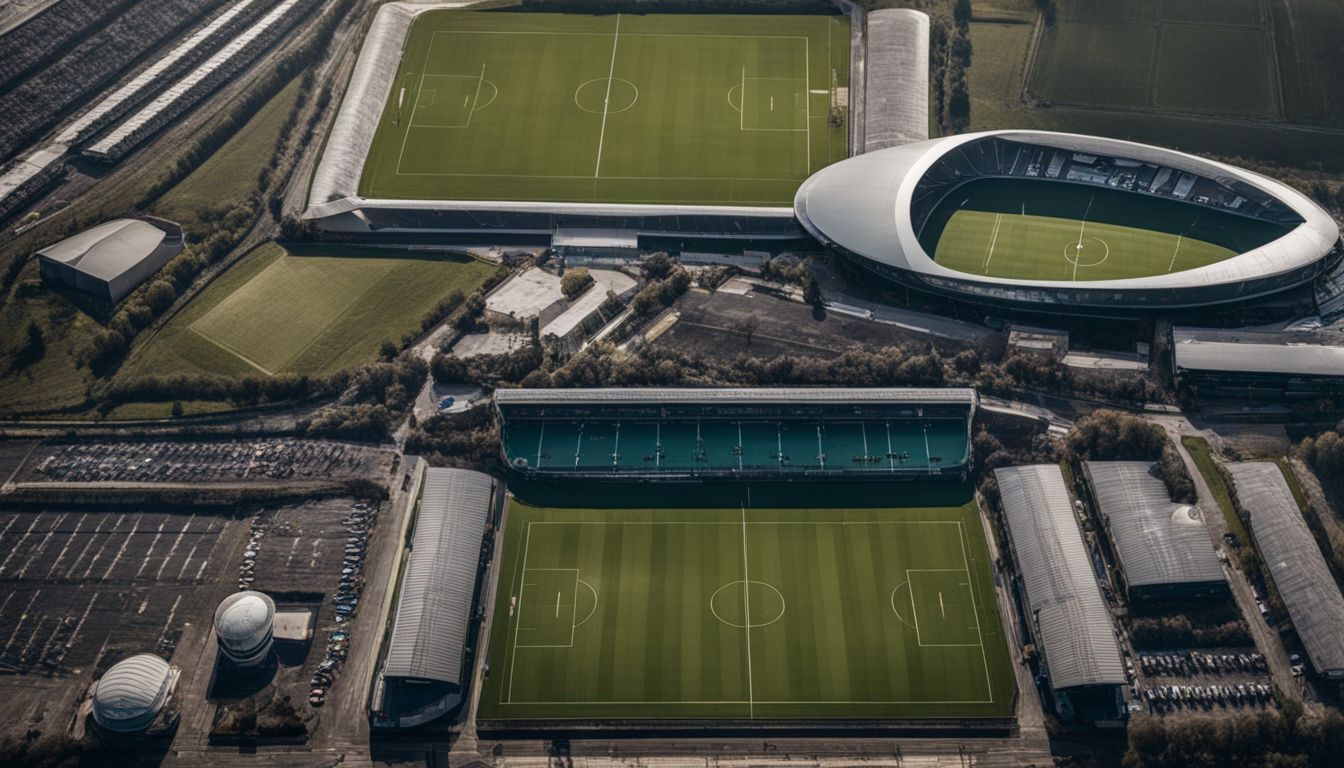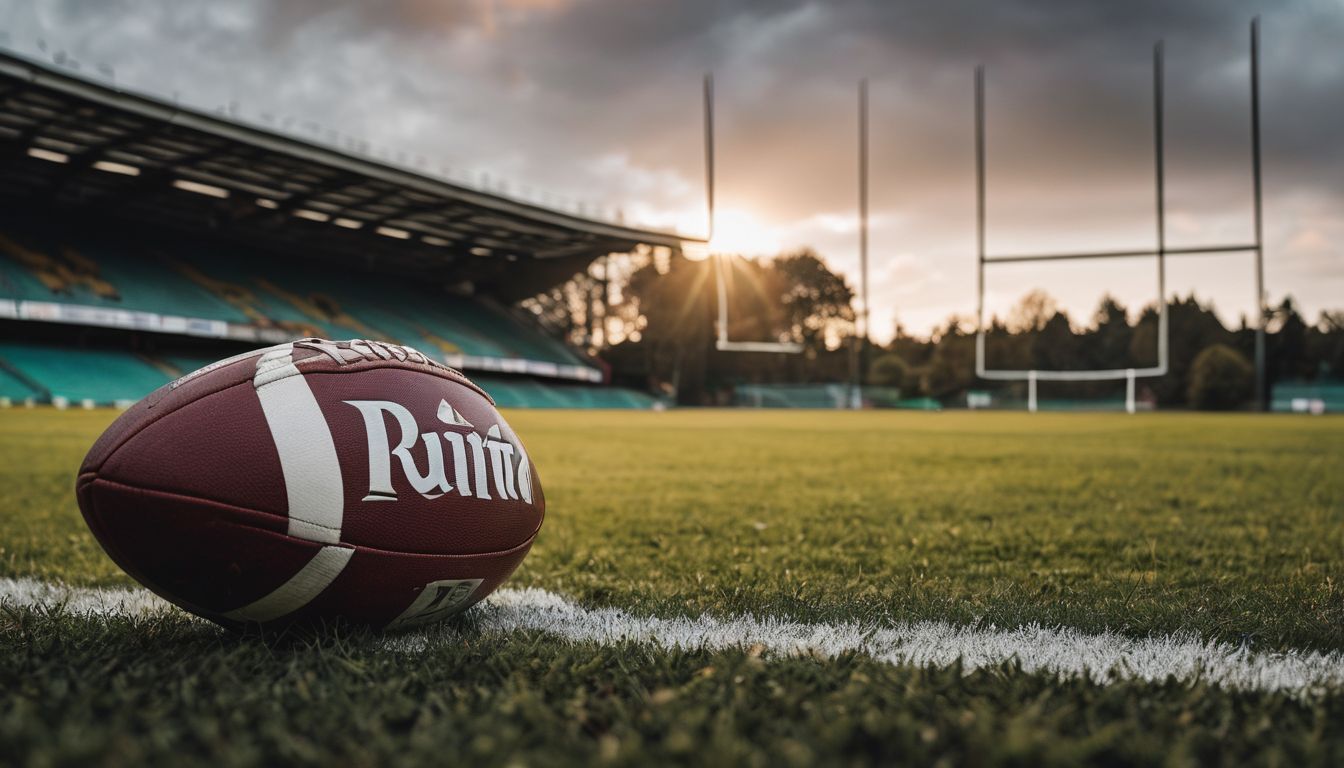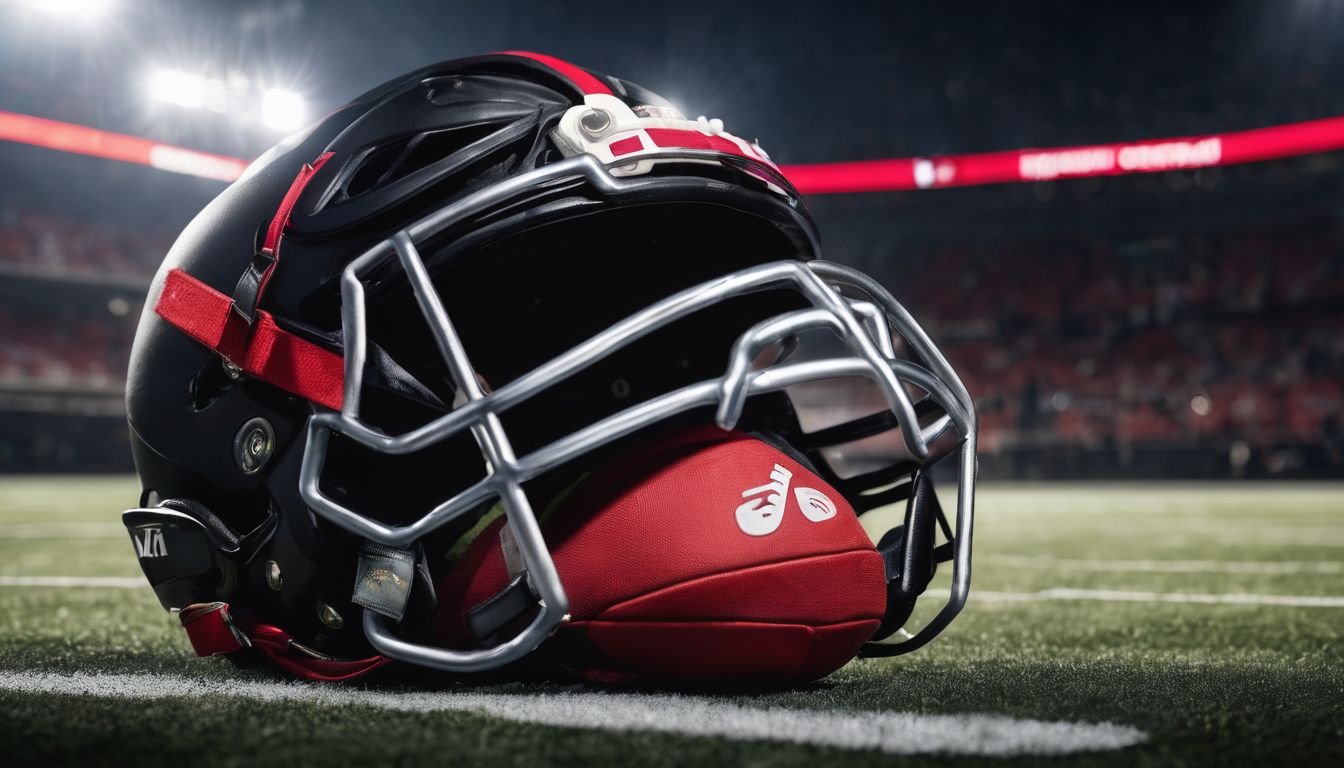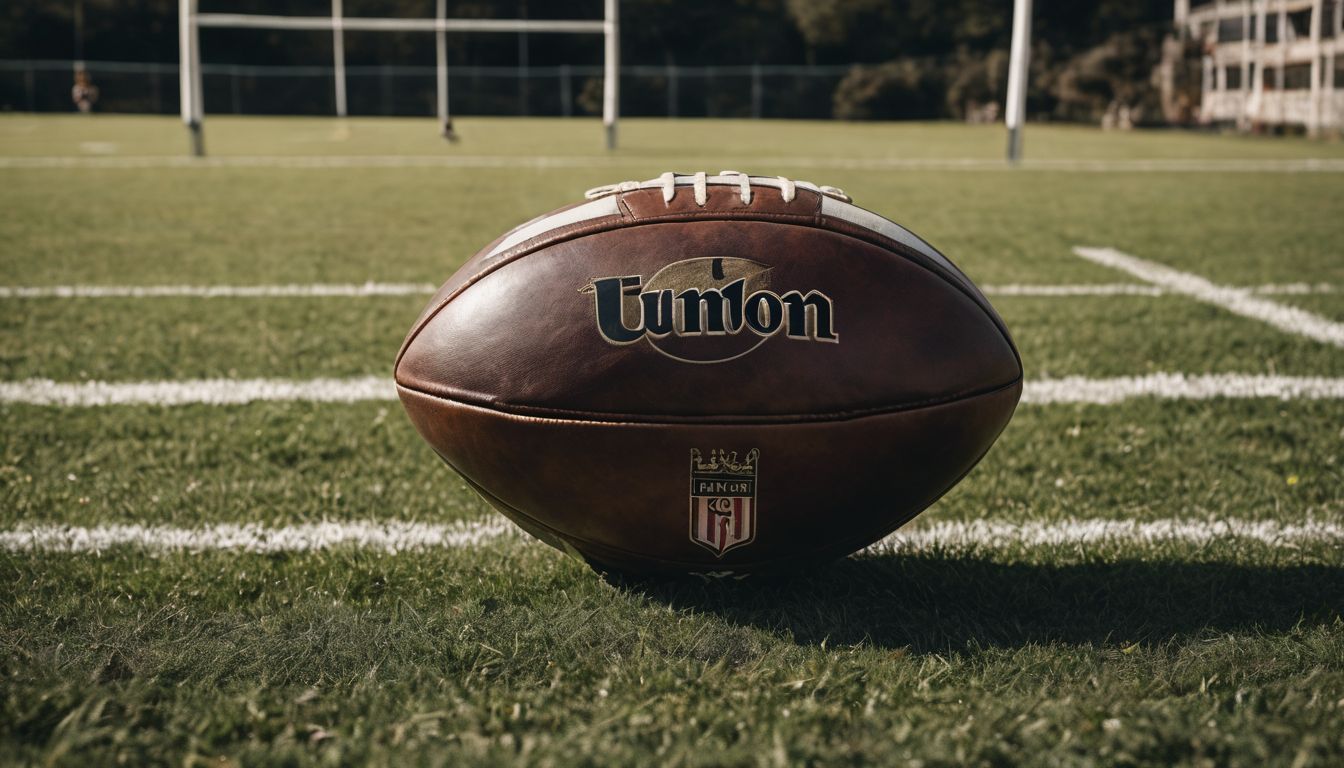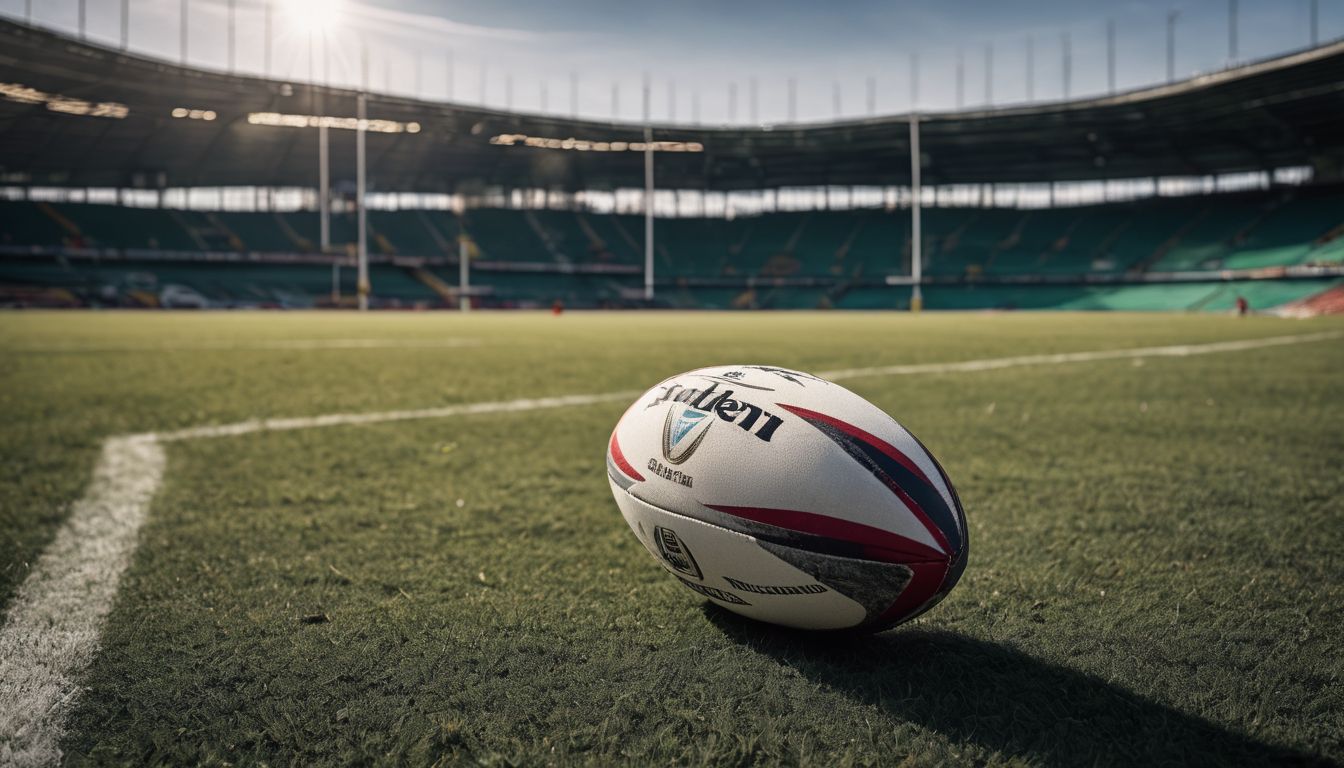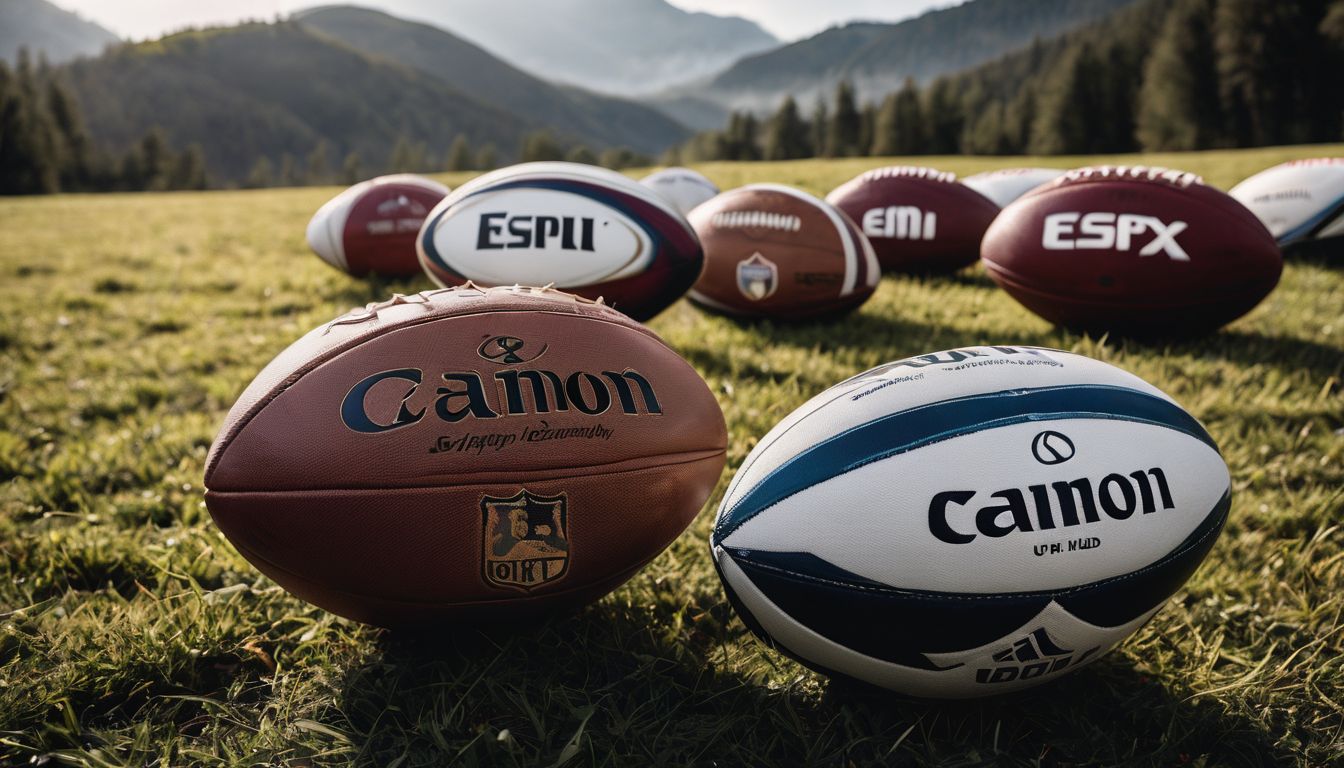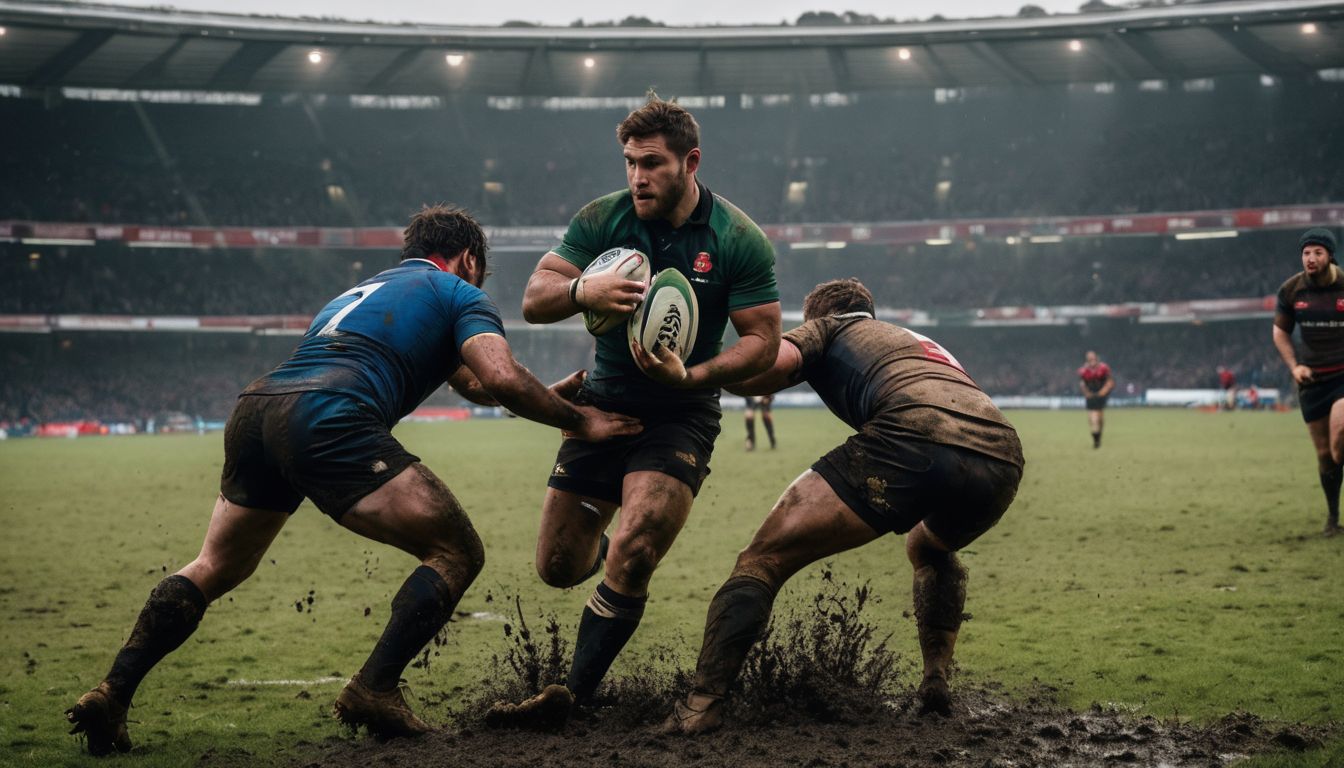For rugby fans, the ground beneath the players’ boots is more than just grass or turf—it’s a key player in the game. Did you know that elite Italian rugby players usually find artificial turf safe? This blog will explore how different playing surfaces impact both injury risks and game strategies in Six Nations Rugby.
Dive in as we unravel the science shaping the field of play!
Key Takeaways
- Artificial turf is considered safe like natural grass, not causing more traumatic injuries. Italian rugby players’ study shows similar injury rates between surfaces.
- Different playing surfaces affect rugby tactics and performance, with artificial turf enabling faster play and consistent ball movement.
- Player footwear is key for optimum performance; the right cleats can prevent injury and enhance stability on both grass and synthetic pitches.
- Hybrid surfaces blend benefits of natural grass and artificial turf, offering durability alongside a traditional feel underfoot.
- Ongoing research funded by World Rugby aims to further understand long – term effects of artificial pitches on players’ health and game quality.
The Controversy of Playing Surface Preference in Rugby
Rugby players, coaches, and officials have long debated the impact of playing surfaces on performance and injury risk. The influence of artificial surfaces on player health, game strategy, and perceptions of muscle soreness continue to be topics of interest in elite rugby.
Influence of artificial surfaces on injury risk
Artificial surfaces have sparked intense discussions in the world of elite rugby players. Concerns revolve around how these pitches might elevate injury risk compared to natural grass.
Studies, including one focusing on Italian rugby professionals, suggest that synthetic turf is not linked to a higher incidence of traumatic injuries. Yet debates continue as researchers and World Rugby invest in projects to better understand artificial turf’s full effects on athletes during high-stakes matches.
Players often report different physical sensations after competing on artificial turf versus grass fields. Muscle soreness and recovery times are scrutinised by sports scientists seeking optimal conditions for athlete health and performance.
As this knowledge evolves, team strategies and player selections may adapt to exploit the distinct dynamics of artificial playing surfaces without compromising safety.
Perceptions of muscle soreness among players
Rugby players commonly experience muscle soreness after playing on different surfaces. This discomfort can vary depending on the type of playing surface, with some reporting increased soreness when playing on artificial turf compared to natural grass.
Understanding player perceptions of muscle soreness is crucial for optimising recovery and performance, especially in elite rugby where matches are physically demanding. It’s important for player safety and well-being to consider the impact that different playing surfaces have on muscle soreness.
Moving forward, let’s delve into how these perceptions influence game strategy and play style among rugby players.
Impact on game strategy and play style
Artificial playing surfaces can significantly impact game strategy and play style in elite rugby. The predictable nature of artificial turf allows for faster and more consistent ball movement, leading to a more dynamic and high-paced style of play.
Conversely, natural grass may create an unpredictable surface, influencing strategic decisions such as kicking distance and accuracy while also impacting player mobility. This variation necessitates adaptability from players, as the choice of surface directly affects how teams approach their tactical gameplay.
Player preferences between natural grass and artificial turf undoubtedly influence game strategy and play styles during Six Nations matches. The differences in how the ball interacts with each type of surface require players to adjust techniques accordingly, affecting passing accuracy, running lines, and defensive positioning.
The Influence of Playing Surfaces in Elite Rugby
A study on injury risk in Italian players revealed the impact of playing surfaces on player health and performance. The comparison of grass vs. turf highlighted the importance of surface selection for optimal athletic performance and player selection.
Study on injury risk in Italian players
Italian rugby players have been scrutinised to assess the injury risks associated with different playing surfaces. Here’s a snapshot of the findings:
| Injury Type | Grass | Artificial Turf |
|---|---|---|
| Traumatic | Higher incidence on grass | Comparable safety to grass |
| Overuse | Common on grass | Slight increase on turf |
| Concussions | Slightly lower on grass | Similar rates to grass |
| Joint Injuries | Occurs on grass | No significant difference |
| Muscle Injuries | Usual on grass | Increased soreness reported |
Elite Italian players’ experiences contributed to these insights. World Rugby’s research funding proves pivotal in expanding our comprehension of artificial surfaces’ impacts. Player safety remains the utmost priority, informing decisions on preferred playing surfaces.
Comparison of grass vs. turf
Artificial turf seems to be a safe option for elite Italian rugby players. However, the preference among Six Nations tournament players leans towards natural grass. Players around the world generally favor natural grass over artificial turf, citing reasons such as injury risk and comfort during play. The ongoing debate and research around the impact of playing surfaces on injury risk highlight the importance of considering player safety and performance in rugby.
The type of playing surface can vary between different countries, with some using artificial turf and others sticking to natural grass. This factor has significant implications for player interaction with the surface as well as injury risks. Rugby union’s emphasis on finding a balance between player safety and performance makes it crucial to continue studying these effects on both natural grass and artificial turf pitches.
Impact on performance and player selection
Artificial turf has shown to impact player performance, influencing factors such as speed, agility, and ball control. The surface’s firmness and consistent bounce affect players’ movements, making it crucial for rugby teams to adapt their strategies when playing on artificial turf.
Additionally, player selection can be influenced by the type of playing surface due to its impact on injury risk and recovery time. Identifying players who are best suited for specific surfaces becomes a key consideration for team management in optimising performance.
The preference for natural grass among Six Nations players affects the selection process based on familiarity and comfort with the traditional surface. Furthermore, understanding how different surfaces influence player abilities allows coaches to tailor training programmes and game plans accordingly.
The Debate: Natural Grass vs. Artificial Turf
Discover the arguments for and against each playing surface, as well as the latest advancements in artificial turf technology. Read on to gain a deeper understanding of the ongoing debate between natural grass and artificial turf in elite rugby.
Arguments for and against each surface
Arguments for and against natural grass and artificial turf in rugby:
- Natural Grass:
- Provides a more traditional playing surface.
- Offers better shock absorption, reducing the impact on players’ joints.
- Artificial Turf:
- Requires less maintenance and can withstand various weather conditions.
- Provides a consistent playing surface, promoting a faster-paced game.
- Natural Grass:
- Can become muddy and slippery during rainy weather, affecting player traction.
- Artificial Turf:
- May increase the risk of skin abrasions and burns due to its texture.
- Natural Grass:
- Has a more natural feel underfoot, allowing for better ball control and handling.
- Artificial Turf:
- Can cause increased muscle soreness due to its firmness, affecting player recovery.
- Natural Grass:
- Can be challenging to maintain during extreme weather conditions such as frost or drought.
- Artificial Turf:
- Has been linked to higher rates of certain non – traumatic injuries among rugby players.
- Natural Grass:
- Develops inconsistencies in surface over time, potentially leading to uneven bounces or rolls.
- Artificial Turf:
- Poses an environmental concern due to its non – biodegradable materials used in production.
- Natural Grass:
- Provides a cooler playing surface during hot climates, reducing heat – related fatigue.
- Artificial Turf:
- Requires an infill material that may need replacement over time due to wear and tear.
- Overall, the choice between natural grass and artificial turf revolves around weighing the trade – offs between tradition, performance, safety, and sustainability in elite rugby play.
Advancements in artificial turf technology
Advancements in artificial turf technology have significantly improved the playing experience for rugby players. The development of softer and more durable synthetic fibres has reduced the risk of traumatic injury, providing a safer surface for elite athletes to compete on.
In addition, advancements in infill materials have enhanced shock absorption and traction, allowing players to move confidently across the field without compromising their performance.
These innovations address concerns about muscle soreness and fatigue, offering a more comfortable and consistent playing surface that supports player safety and optimal game play.
The evolution of artificial turf technology continues to shape the landscape of rugby playing surfaces, aligning with World Rugby’s commitment to advancing research and understanding the impact of different field conditions on player interaction within the sport.
Shoe Cleats and Their Role in Optimal Performance
Proper footwear is crucial for optimal performance on different playing surfaces, and players need to consider the right shoe cleats for varying weather conditions and pitch types.
To learn more about the impact of shoe cleats on player performance, read the full blog!
Importance of proper footwear on different surfaces
Choosing the right footwear is crucial for rugby players on different surfaces. The type of studs worn can significantly impact performance and reduce the risk of injury. Players need to consider the traction needed for grass versus artificial turf, as well as adapt their footwear to varying weather conditions.
It’s important to prioritise safety and performance by having the appropriate footwear for each playing surface.
Rugby fans should understand that wearing suitable studs enhances player stability and agility on diverse surfaces. Having proper footwear can help prevent slips, strains, and other potential injuries, ensuring that players can perform at their best while staying safe during matches.
Adaptations for varying weather conditions
Rugby players must adapt to varying weather conditions, requiring different footwear for optimal performance on wet or muddy natural grass surfaces compared to dry artificial turf.
Proper boots are crucial in providing traction and stability, reducing the risk of slips and falls during gameplay. Additionally, players need to adjust their strategy and play style according to weather conditions, as wet grounds can affect passing accuracy and kicking distance.
The science behind these adaptations emphasises the importance of player safety and performance in rugby, encouraging further research into how weather impacts gameplay.
The impact of weather conditions necessitates a thorough understanding of how natural grass and artificial turf surfaces respond differently to rain, heat, or cold temperatures. Such insights will inform measures taken by teams and ground staff in preparing playing surfaces for matches under varying weather conditions.
Hybrid Playing Surfaces: The Best of Both Worlds
Hybrid playing surfaces offer the best of both natural grass and artificial turf, providing durability and low maintenance while still offering a natural feel for players. Read on to discover more about the future of rugby playing surfaces.
Overview and benefits
Hybrid playing surfaces offer the best of both worlds, combining the durability and low maintenance of artificial turf with the natural feel and playability of grass. These innovative surfaces provide a consistent and stable playing field while reducing the risk of player injury, making them an attractive option for elite rugby tournaments like the Six Nations.
By integrating synthetic materials with natural grass, hybrid surfaces offer improved shock absorption, traction, and performance characteristics that benefit players’ safety and game experience without compromising on traditional playing conditions.
The benefits of hybrid playing surfaces extend to accommodating various weather conditions, ensuring optimal gameplay regardless of rain or shine. Additionally, these surfaces facilitate faster drainage and require less water usage compared to conventional grass fields.
Examples of successful hybrid surfaces
- The Desso GrassMaster system, used at Twickenham Stadium, features natural grass reinforced with artificial turf fibres. This hybrid surface provides excellent durability and resistance to heavy usage without sacrificing the feel of natural grass.
- The SISGrass technology, found at Murrayfield Stadium, integrates synthetic fibres into the natural turf to improve stability and drainage. This innovative hybrid surface ensures consistent playing conditions throughout the season.
- At Principality Stadium in Cardiff, the XtraGrass hybrid system combines natural grass with artificial turf to create a resilient and high-performance playing surface suitable for elite rugby matches.
- Hybrid surfaces like those mentioned above have gained popularity due to their ability to withstand heavy use and varying weather conditions while providing a consistent and safe playing environment for rugby players.
Conclusion: The Need for Further Research and Consideration
More studies are needed to understand the long-term impact of artificial playing surfaces on rugby players. It is important to find a balance between player safety and performance.
If you want to learn more about the science behind Six Nations playing surfaces and its impact on the game, keep reading!
Call for more studies on long-term impact of artificial surfaces
World Rugby’s commitment to funding research in the impact of artificial surfaces on the game is crucial. Researchers are exploring evidence-based strategies for player safety and performance by understanding long-term effects.
The association acknowledges it’s critical to seek a balance between technological advancements and potential risks associated with artificial turf, reinforcing the need for ongoing studies.
This approach aligns with the importance placed on ensuring optimal playing conditions and safeguarding players’ well-being.
Importance of finding a balance between player safety and performance
Striking a balance between player safety and performance is crucial in the world of rugby. As the sport becomes increasingly physically demanding, it is essential to consider the potential impact of different playing surfaces on injury risk while also optimising player performance.
Understanding how various surfaces influence muscle soreness, game strategy, and overall play style can lead to informed decisions that prioritise both the well-being of athletes and their ability to excel on the field.
Moreover, advancements in artificial turf technology offer promising prospects for enhancing player safety without compromising performance. With ongoing research supported by World Rugby to broaden our knowledge of these surfaces’ impact on the game, it’s clear that finding this equilibrium is imperative for the future of rugby.
FAQs
1. What makes the playing surfaces in Six Nations rugby so special?
The Science Behind Six Nations Playing Surfaces involves understanding how player surface interaction works and using maths and science to make games safer and more competitive.
2. Why does it matter if a rugby pitch is natural grass or artificial turf?
Choosing between natural grass vs artificial turf in rugby affects player interaction, with each type of surface offering different risks for injury and affecting gameplay.
3. How do maths and science help in rugby’s Six Nations tournament?
Mathematics and science are crucial in analysing Rugby pitch surfaces, helping improve performance while reducing injuries during high-profile events like the Rugby World Cup.
4. Has research been done on artificial rugby surfaces for the Six Nations?
Yes, extensive field research on artificial rugby surfaces has been conducted to gauge their impact on players’ health and performance compared to natural pitches.
5. What is World Rugby’s stance on using artificial turf?
World Rugby assesses all surface types thoroughly before giving them approval; they monitor how artificial turf might influence the game’s pace or increase risk of injury.



